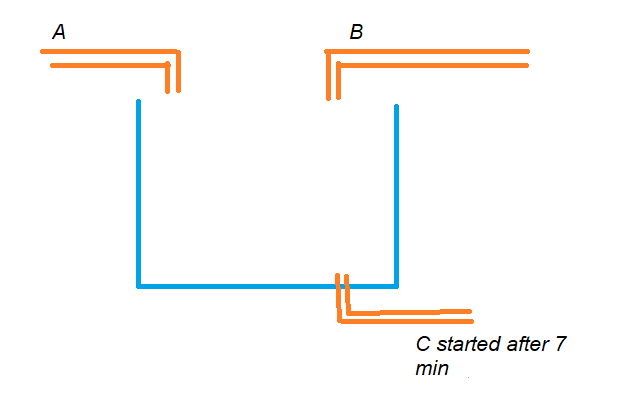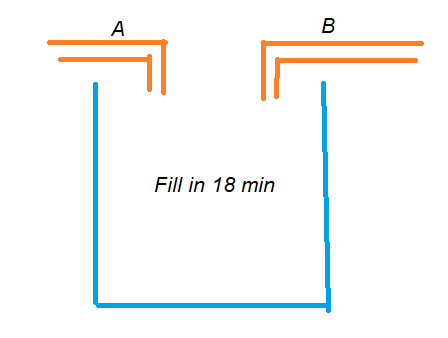Pipes and Cistern Complex Examples
In this class, We discuss Pipes and Cistern Complex Examples.
For Complete YouTube Video: Click Here
The reader should have prior knowledge of pipes and cistern formulae. Click Here.
Example 1:
Two pipes, A and B, can fill a tank in 36 and 45 minutes, respectively.
A water pipe C can empty the pipe in 30 minutes.
First, A and B are open for seven minutes. After 7 minutes, C is opened; how much time will it take to fill the tank?
Solution:
The below diagram shows the graphical intuition for the example.

A and B work simultaneously for seven minutes.
Basic formulae identify A and B’s one-minute capacity.
Total capacity is filled in 7 minutes, and the remaining part is considered.
A’s one minute = 1/36
B’s one minute = 1/45
(A + B).’s one minute = (1/36 + 1/45)
(A + B).’s seven-minute = 7(1/36 + 1/45) = 7/20
Remaining part = 1 – 7/20
= 13/20
Net part filled in one minute when A, B, and C are working simultaneously = ( 1/36 + 1/45 – 1/30) = 1/60
1/60 part filled in one minute
13/20 part filled in how many minutes?
= (13/20)/(1/60) = 39 minutes
Total Time = 39 + 7 = 46 minutes.
Example 2:
Two pipes, A and B, can fill a tank in 24 and 32 minutes, respectively.
If both the pipes opened simultaneously, then after how much time should B be closed to fill the tank in 18 minutes?
Solution:
The below diagram shows the graphical intuition of the example.

A’s one minute = 1/24
B’s one minute = 1/32
Let B be closed after x minutes.
Part filled by A + B in x minutes + Part filled by A in 18-x minutes = 1
x[1/24 + 1/32] + (18-x) 1/24 = 1
7x/96 + (18 – x)/24 =1
7x + 4(18 – x) = 96
x = 8
Closed after 8 minutes.
